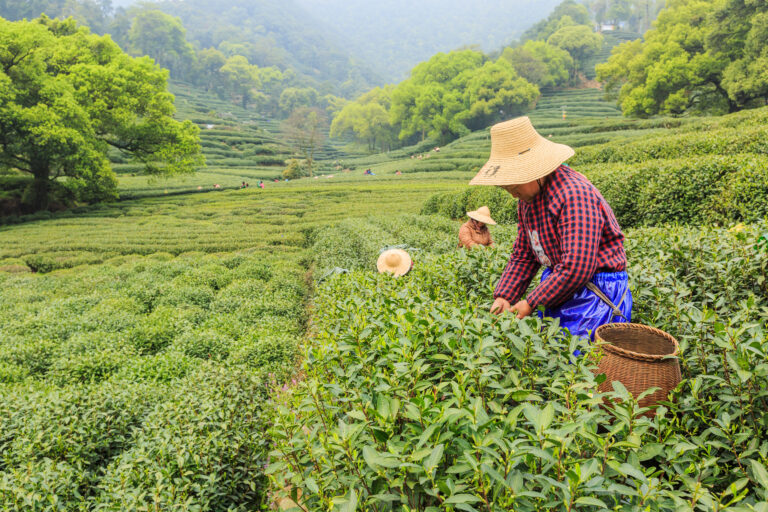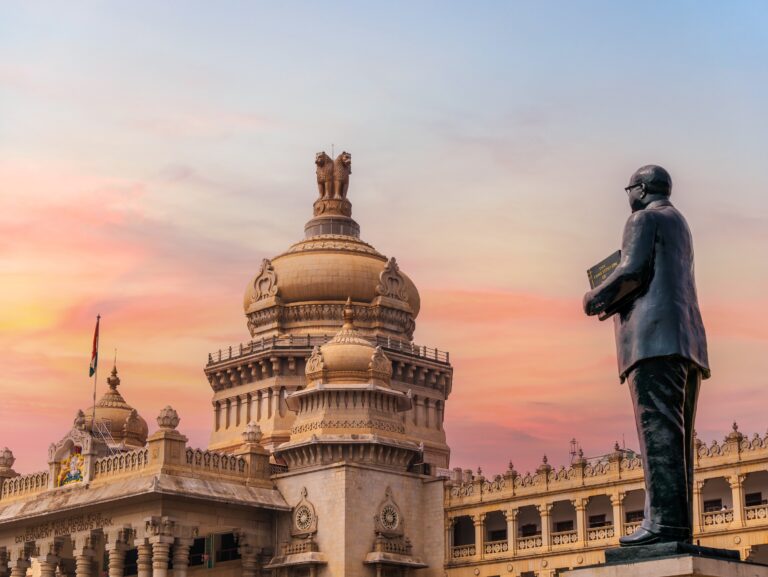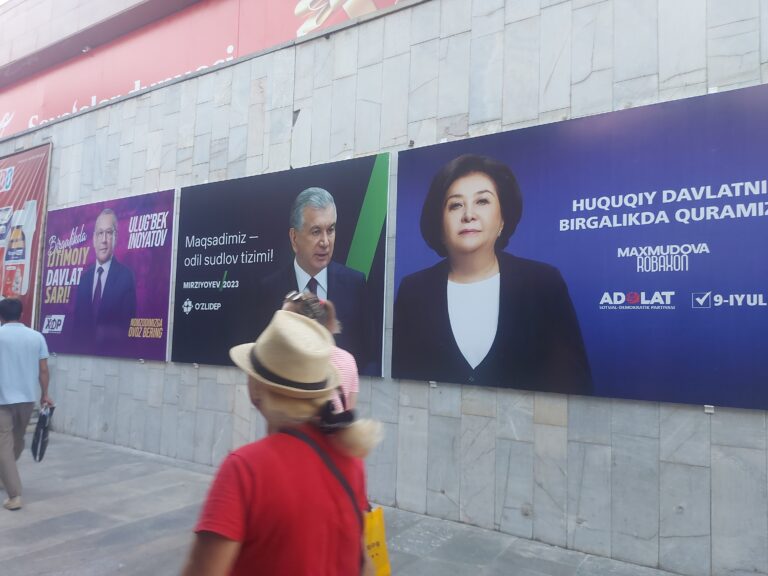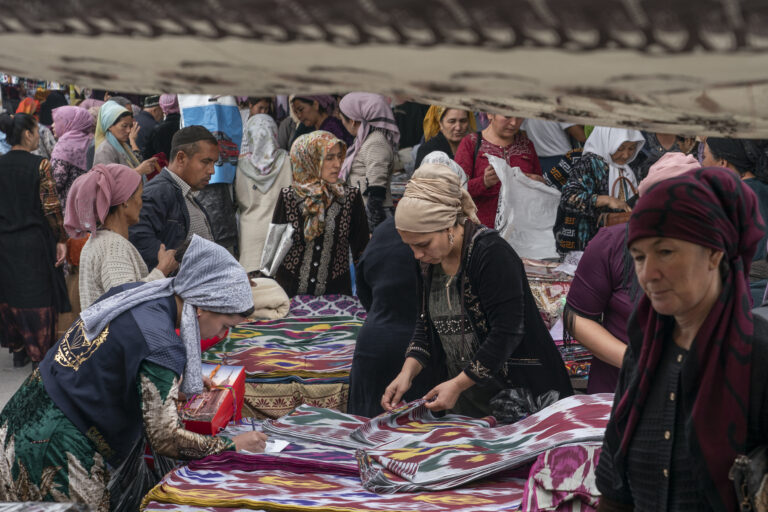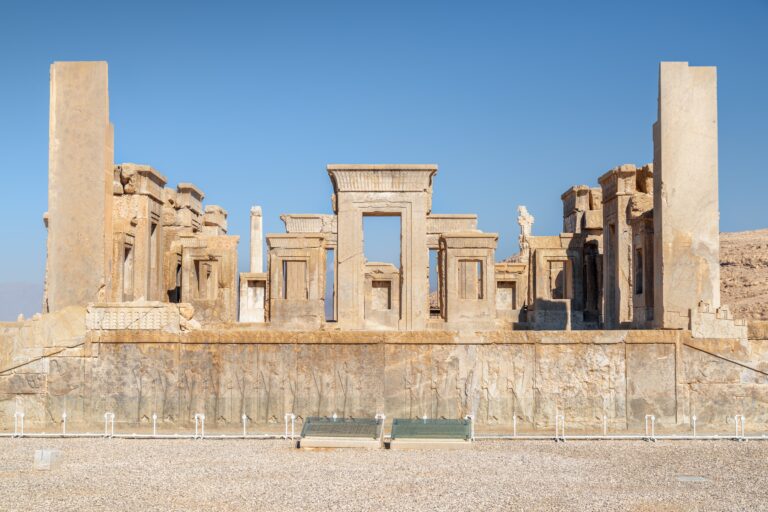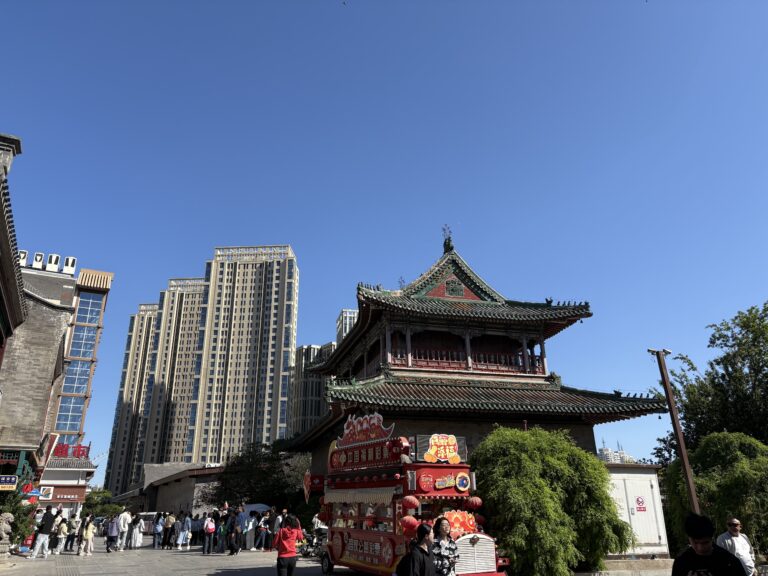Kyrgyzstan and the Future of Tradition
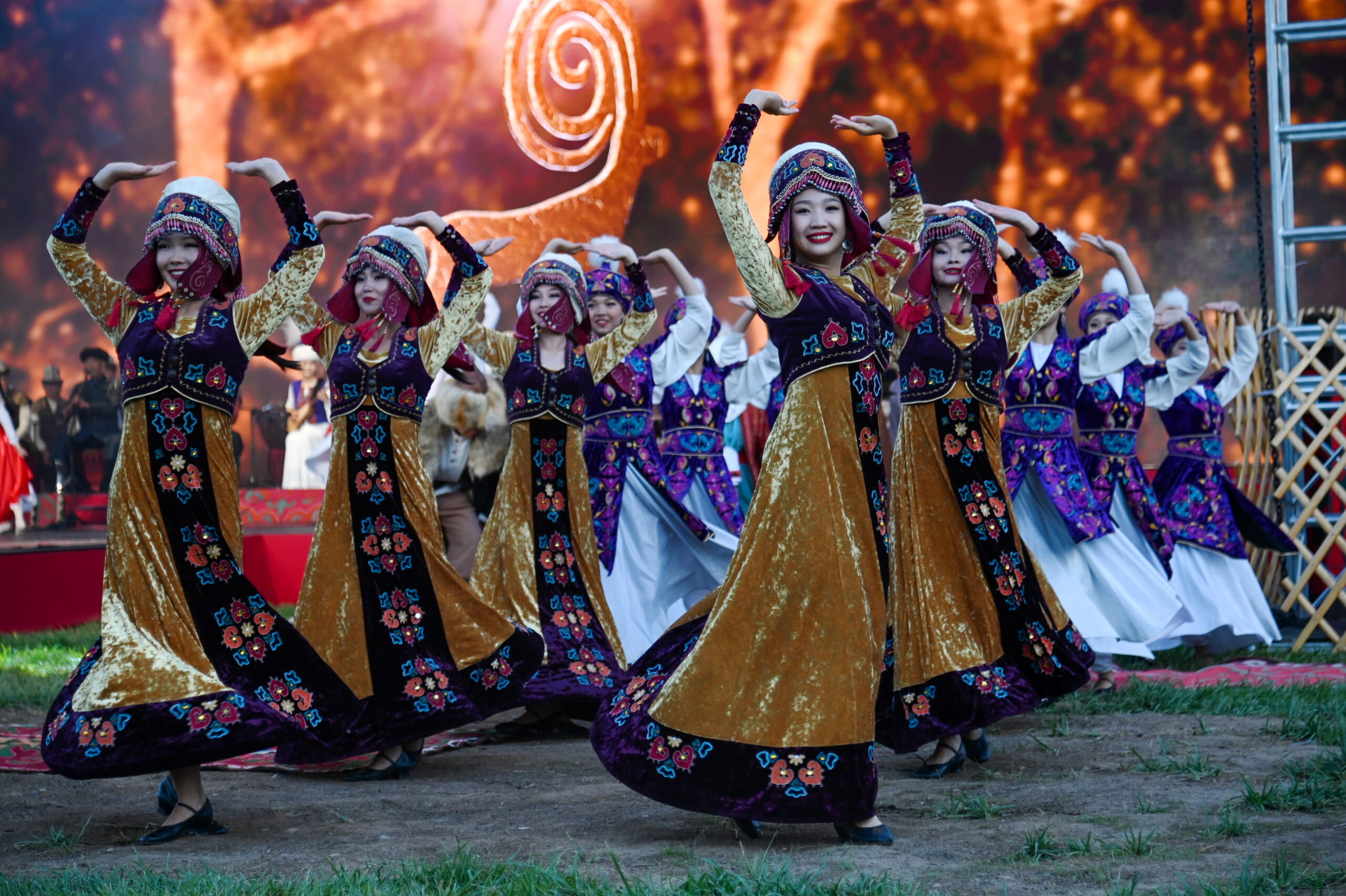
Joe Luc Barnes is an author and journalist writing on the countries of the former Soviet Union
Cholpon Melisbekova rests her komuz across her lap, the carved wooden instrument worn smooth by years of practice. “When I was little, in the 2000s, I was embarrassed to carry it with me,” she tells me. “Now I play it with pride.”
The komuz is Kyrgyzstan’s national instrument, a three-stringed lute carried by nomads on the steppe and played at gatherings for centuries. But to survive in the age of Spotify, the komuz must find a way to compete with an all-pervasive worldwide mainstream. Cholpon’s music is part of a broader question that Kyrgyzstan is asking: how can old traditions find a place in contemporary life? This summer it posed that question through its inaugural Festival of Traditional Culture and Music: Ruh-Sanat.
I am on the northern shore of Issyk-Kul, a vast alpine lake ringed by the Tien Shan mountains. For three days its cultural centre has been alive with music and debate. The varied programme flits between an international performance contest, a craft market, and an academic conference where musicians and scholars ask how traditions can be sustained in the face of migration, digitisation and shifting popular culture.

“When I was little, very few people appreciated traditional music,” Cholpon recalls. “It was as if they did not take it seriously. But every year it grows more visible and more respected. It is played and spread more and more.”
The komuz is not the only traditional element making a comeback. We are greeted at the entrance by ceremonially-garbed women bearing bowls of boorsok, bite-sized chunks of fried bread with which it is customary greet guests in Kyrgyzstan. Many of the males, meanwhile, don the ak-kalpak, the country’s traditional felt hat. Historically made of sheepskin, the kalpak was once reserved for older men or special occasions. Now it has become part of national identity – at a recent international football match between Kyrgyzstan and Qatar, almost every man in the crowd was wearing one. There is even a Kalpak Day, celebrated each year on 5 March.

The revival of interest in tradition comes as the country begins to find confidence three decades after its independence. Kyrgyzstan was pulled from nomadism into Soviet modernity in the early twentieth century, with collectivisation, rapid urbanisation and communist ideology reshaping life in a single generation. The pace of change, combined with Stalin’s purging of the intellectual elite in the 1930s, had a disorientating effect on the Kyrgyz. Many adapted to the new order and broke with a past they viewed as backward.
Chinghiz Aitmatov, Kyrgyzstan’s most famous novelist, used the metaphor of the “Mankurt” to describe this new generation of Soviet Kyrgyz in his novel The Day Last More Than A Hundred Years: an unthinking slave, stripped of memory, who cannot even recognise his own mother.
Independence in 1991 brought different challenges. Kyrgyzstan found itself without the industries and subsidies that had tied it into the Soviet economy. With few natural resources and little capital, the country fell into deep poverty. Today, despite recent breakneck growth, GDP per capita is just under USD $2,500, among the lowest in Asia.
Some of the shortfall is made up by migration. Hundreds of thousands of Kyrgyz citizens work abroad, mainly in Russia, and their remittances keep households afloat. In 2023 they sent home a record USD $2.7 billion, equal to around fifteen percent of GDP. In earlier years the figure was closer to thirty percent. For poorer families the dependence is stark: without those transfers, more than half of them would fall into poverty.
This reliance on absent workers makes cultural continuity harder. Traditions are celebrated, but those who might have passed them on are often abroad. At Ruh-Sanat I meet people trying to fill that gap.

One of them is Daniyar Bekishov, who coordinates Muras, a summer camp for teenagers whose parents work overseas. “Despite the fact that many of them were born or raised abroad, their roots are in Kyrgyzstan,” he tells me. “Our goal is to help them maintain a connection with their native culture, traditions and history.”
The camp takes in teenagers aged twelve to sixteen. Over the summer they learn to build yurts, play traditional games, and join in folk songs and dances. They take part in crafts, quizzes and sports, ending each day with performances of their own.
“Many participants became more interested in Kyrgyz culture, asked questions, wanted to learn to play the komuz, master dances and crafts,” Daniyar says. “Such impressions remain for a long time and help strengthen the bond between generations.”
Birgit Ellinghaus, director of the Cologne-based cultural initiative alba KULTUR, concurs on the importance of this first-hand interaction with traditional culture. “Today, there are hardly any societies left that pass on knowledge and skills in the oral tradition from generation to generation, from master to student, in nomadic groups and rural environments,” she says, adding that current trends to over-intellectualise traditional music through “academicization” risks tarnishing it with a “museum-like” feel.
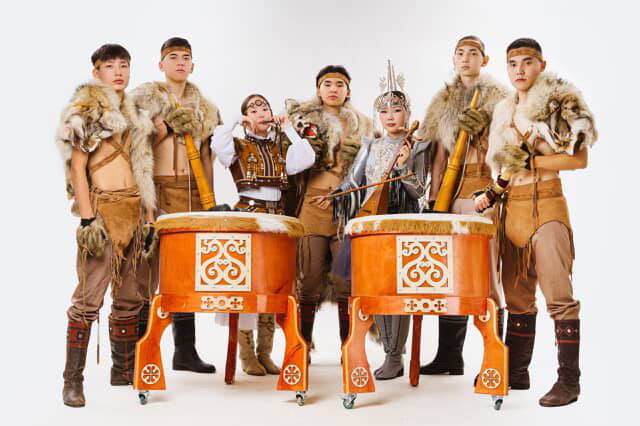
The battle to preserve identity is not unique to Kyrgyzstan. At Ruh-Sanat, one of the most visually haunting performances is from Dobun, an ensemble from Yakutia, in Siberia’s far north. The Sakha people who live there have also had to constantly adapt themselves to the shifting doctrines emerging from Moscow.
Their song “Baianay Algyha” appeals to this sense of ancient durability. It honours the spirit-master of the forest, and is almost primeval in its use of vocals, the vibrating steel of the khomus jaw harp and the low thump of the chardaat-kupsuur ritual drum.
Their director, Marina Ilyinichna Sokolnikova-Mokhnachevskaya, explains the parallels between the Sakha and their hosts.
“Both Kyrgyzstan and Yakutia are currently experiencing a powerful movement to revive their ancestral traditions. We see how the younger generation is showing increasing interest in their roots, actively studying the language, ancient rituals and music. Festivals like Ruh-Sanat play a key role in exchanging experiences and jointly preserving our common heritage.”

In Central Asia and beyond, younger generations are rediscovering traditions once suppressed or neglected. The festival showcases artists from Guinea, Chile, and even from small Swedish speaking islands off the coast of Estonia, all of whom highlight the importance of passing on their cultural heritage to the next generation.
But these traditions are just small, fragile parts of the whirlwind of content that competes for our attention. For all the enthusiasm at Ruh-Sanat, Husniddin Ato, a culture policy and world music expert from Uzbekistan, is blunt about the forces arrayed against traditional art forms.
“Since pop culture has a larger audience, traditional music culture often goes under the radar,” he says. “You can see this when you compare professional music concerts by genre and income in the capital of each Central Asian country.”
The contrast is visible in the week of the festival itself. While Ruh-Sanat took place on the shores of Issyk-Kul, American singer Jennifer Lopez performed in Almaty and Tashkent, with fans paying a minimum of USD $78 for tickets, far beyond the means of the average Central Asian family. Many of the Central Asian elite even travel as far afield as Dubai in their desire to see global superstars.

In contrast, Ruh-Sanat, free to attend, government subsidised, and inspiring national pride, nevertheless struggled to fill the venue.
Ato argues that government funding is necessary but insufficient. “Without the sustainable support of the private sector … it is impossible to make traditional music heritage more alive than before,” he says.
*
But the government has reason to invest. It has more to gain from its artistic patronage than cultural preservation. Indeed, this festival is only part of a series of state-led rebranding efforts undertaken by the administration of Sadyr Japarov, a populist politician who came to power after being sprung from jail in October 2020. These include the adoption of a new flag design in December 2023, and a public competition to create a new national anthem. In a similar vein, this June, Central Asia’s largest statue of Lenin was pulled down in the city of Osh.
There is nothing unusual about this. Eric Hobsbawm’s The Invention of Tradition (1983) argues that many of today’s “ancient” practices are actually recent constructions, crafted and promoted to serve a new social or political agenda. In Scotland, for example, tartan, kilts and bagpipes became symbols of Highland identity long after the Act of Union in 1707. As historian Hugh Trevor-Roper observed in the same volume, “before the union, it did indeed exist in vestigial form; but that form was regarded by the large majority of Scotchman as a sign of barbarism: the badge of roguish, idle, predatory, blackmailing Highlanders who are more of a nuisance than a threat to civilised, historic Scotland.”

Kyrgyzstan’s experience carries a similar echo. During the Soviet period, the ak-kalpak all but disappeared from city streets, relegated to rural elders, while men in Bishkek adopted European clothing. The country’s first two presidents, Askar Akayev and Kurmanbek Bakiyev, appeared almost exclusively in Western suits; if they wore the kalpak at all, it was for carefully staged occasions. But as Kyrgyzstan has grown in confidence, and particularly since the current government has come to power, the kalpak, like tartan before it, shifted from a provincial relic to a national emblem.
There is always a risk that state co-option of symbols and music for its own ends can come across as rather naff, especially if it is perceived as top-down.
“There is a growing tendency among populist governments in many countries, including Hungary, India, Turkey, China, to misuse selected traditional music as means of strengthening national identity and for propaganda of populist politics,” says Ellinghaus. “This goes hand in hand with targeted investments in these forms of expression, while other traditional music, such as that of politically inconvenient minorities, are ignored or even persecuted and censored.”
For Kyrgyzstan, the challenge will be to ensure that state-backing does not narrow the spectrum of voices and instead supports the pluralism of traditions that the country possess – this includes a substantial Uzbek population, as well as Russians, Dungans and Uighurs. In all, ethnic minorities made up around 27% of the population at the time of the last census in 2018.

Nevertheless, in the case of the komuz or the kalpak, the government is capitalising on grassroots affection from a substantial portion of the country. Ellinghaus notes that Ruh-Sanat largely came about due to the tireless efforts of Roza Amanova, a singer and Kyrgyz cultural icon, who threw her full weight behind the festival in order to garner government support.
Ruh Sanat shows that, both on the state and societal level, the will to preserve tradition is strong. The festival also helps demonstrate that this struggle is shared across borders. It brings together performers who might otherwise never meet and shows younger audiences their heritage on an international stage. In a country beginning to find its footing after years of hardship, Kyrgyz culture is stepping into the present with its head held high – and a kalpak placed firmly on top.
*title and gallery images courtesy of Mariya Malinovskaya.
The opinions expressed are those of the contributor, not necessarily of the RSAA.

